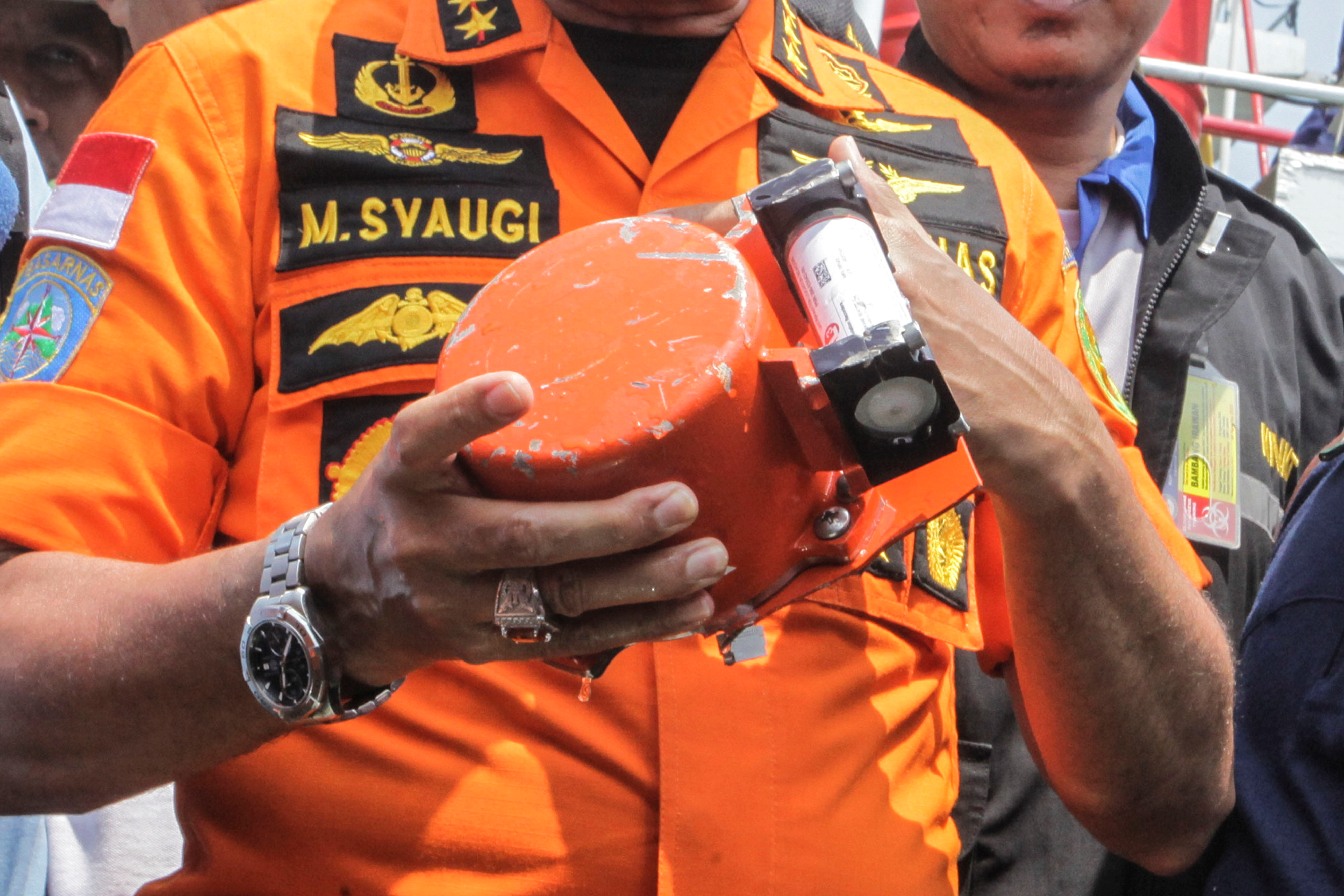
By Cindy Silviana, Jamie Freed and Tim Hepher
JAKARTA/SINGAPORE/PARIS (Reuters) – The pilots of a doomed Lion Air Boeing 737 MAX scoured a handbook as they struggled to understand why the jet was lurching downwards, but ran out of time before it hit the water, three people with knowledge of the cockpit voice recorder contents said.
The investigation into the crash, which killed all 189 people on board in October, has taken on new relevance as the U.S. Federal Aviation Administration (FAA) and other regulators grounded the model last week after a second deadly accident in Ethiopia.
Investigators examining the Indonesian crash are considering how a computer ordered the plane to dive in response to data from a faulty sensor and whether the pilots had enough training to respond appropriately to the emergency, among other factors.
It is the first time the voice recorder contents from the Lion Air flight have been made public. The three sources discussed them on condition of anonymity.
Reuters did not have access to the recording or transcript.
A Lion Air spokesman said all data and information had been given to investigators and declined to comment further.
The captain was at the controls of Lion Air flight JT610 when the nearly new jet took off from Jakarta, and the first officer was handling the radio, according to a preliminary report issued in November.
Just two minutes into the flight, the first officer reported a “flight control problem” to air traffic control and said the pilots intended to maintain an altitude of 5,000 feet, the November report said.
The first officer did not specify the problem, but one source said airspeed was mentioned on the cockpit voice recording, and a second source said an indicator showed a problem on the captain’s display but not the first officer’s.
The captain asked the first officer to check the quick reference handbook, which contains checklists for abnormal events, the first source said.
For the next nine minutes, the jet warned pilots it was in a stall and pushed the nose down in response, the report showed. A stall is when the airflow over a plane’s wings is too weak to generate lift and keep it flying.
The captain fought to climb, but the computer, still incorrectly sensing a stall, continued to push the nose down using the plane’s trim system. Normally, trim adjusts an aircraft’s control surfaces to ensure it flies straight and level.
“They didn’t seem to know the trim was moving down,” the third source said. “They thought only about airspeed and altitude. That was the only thing they talked about.”
Boeing Co declined to comment on Wednesday because the investigation was ongoing.
The manufacturer has said there is a documented procedure to handle the situation. A different crew on the same plane the evening before encountered the same problem but solved it after running through three checklists, according to the November report.
But they did not pass on all of the information about the problems they encountered to the next crew, the report said.
The pilots of JT610 remained calm for most of the flight, the three sources said. Near the end, the captain asked the first officer to fly while he checked the manual for a solution.
About one minute before the plane disappeared from radar, the captain asked air traffic control to clear other traffic below 3,000 feet and requested an altitude of “five thou”, or 5,000 feet, which was approved, the preliminary report said.
As the 31-year-old captain tried in vain to find the right procedure in the handbook, the 41-year-old first officer was unable to control the plane, two of the sources said.
The flight data recorder shows the final control column inputs from the first officer were weaker than the ones made earlier by the captain.
“It is like a test where there are 100 questions and when the time is up you have only answered 75,” the third source said. “So you panic. It is a time-out condition.”
The Indian-born captain was silent at the end, all three sources said, while the Indonesian first officer said “Allahu Akbar”, or “God is greatest”, a common Arabic phrase in the majority-Muslim country that can be used to express excitement, shock, praise or distress.
The plane then hit the water, killing all 189 people on board.
French air accident investigation agency BEA said on Tuesday the flight data recorder in the Ethiopian crash that killed 157 people showed “clear similarities” to the Lion Air disaster. Since the Lion Air crash, Boeing has been pursuing a software upgrade to change how much authority is given to the Maneuvering Characteristics Augmentation System, or MCAS, a new anti-stall system developed for the 737 MAX.
The cause of the Lion Air crash has not been determined, but the preliminary report mentioned the Boeing system, a faulty, recently replaced sensor and the airline’s maintenance and training.
On the same aircraft the evening before the crash, a captain at Lion Air’s full-service sister carrier, Batik Air, was riding along in the cockpit and solved the similar flight control problems, two of the sources said. His presence on that flight, first reported by Bloomberg, was not disclosed in the preliminary report.
The report also did not include data from the cockpit voice recorder, which was not recovered from the ocean floor until January.
Soerjanto Tjahjono, head of Indonesian investigation agency KNKT, said last week the report could be released in July or August as authorities attempted to speed up the inquiry in the wake of the Ethiopian crash.
On Wednesday, he declined to comment on the cockpit voice recorder contents, saying they had not been made public.
(Reporting by Cindy Silviana in Jakarta, Jamie Freed in Singapore and Tim Hepher in Paris; writing by Jamie Freed; Editing by Gerry Doyle)








